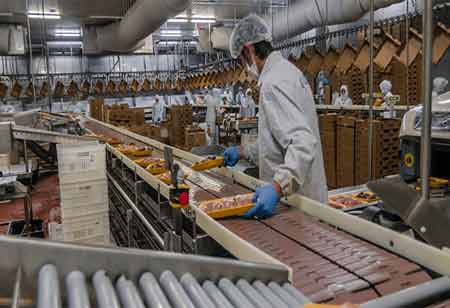Thank you for Subscribing to Food Business Review Weekly Brief
- Home
- Topics
- Alternative Proteins and Plant Based Food
- Beer and Wine
- Canned Beverages
- Coffee And Tea
- Food and Beverage Consulting
- Food and Beverage Financial Service
- Food And Beverages Marketing
- Food Distributors
- Food Ingredients
- Food Sustainability
- Plant Based Food and Beverages
- Seafood Suppliers
- Supplement Manufacturing
- Wine Investment
- News
- Vendor Viewpoint
- CXO Insights
- Conferences
- Newsletter
- CXO Awards
-
Farmed Fish: What You Need to Know
The practice of fish farming or else known as aquaculture has been on an unprecedented rise on the global market.

By
Food Business Review | Tuesday, March 28, 2023
Stay ahead of the industry with exclusive feature stories on the top companies, expert insights and the latest news delivered straight to your inbox. Subscribe today.

Fishes generally have comparatively low feed conversion rates, and it requires very little amount of feed to produce a pound of body mass. Aquaculture practices require considerably low terrestrial spaces and can be taken up at very low costs making them an easy source of income and protein generation.
Fremont, CA: The practice of fish farming or else known as aquaculture has been on an unprecedented rise on the global market, and the number of customers eying on the products has escalated at a severe pace in the domestic and global markets. The practice of raising fish on the farm and capturing wild fish from natural sources differ in a variety of aspects and are not treated equally by the distribution networks, shops, and customers due to the difference in size, taste, and appearance.
Some of the less-known facts about the farm fish can be given as:
Less expensive than wild-caught fish
Farmed fish are generally considered a cheaper alternative to seafood products which are generally on the expensive side. The cost associated with the harvesting, processing, and shipping is lower for the farmed fish as they are caught from domestic sites, making them a suitable option in catering to the needs of seafood lovers. Farmed fish are also considered to be filled with a cleaner flavor than wild-caught ones and provides for better taste and smell in the preparation process.
Presence of crustaceans and shellfishes
A large proportion of the farm fish properties are filled with salmon, tilapia, and catfish, which are gradually moving out to the growth of crustaceans and shellfish over time due to their growing popularity and demand.
Exclusive content of omega-3 fatty acids
Farm-raised fishes are generally seen to have the presence of higher fatty acid content than wild ones. Omega 3 acids are a major characteristic of the species and are acquired generally through the peculiar diets followed by them as the wild-caught fishes thrive on plankton and algae, whereas the farm-fed ones are provided with processed diets derived out of fishmeal, plants, and algae. Producers are able to exercise better control over the diet practices and thereby can control the development of fatty acid growth within the fish. Omega 3 fatty acids are essential in the working of human body systems as they help in the prevention of heart attacks, stroke and even aids in the process of cell membrane development.
Sustainable sources of protein
They are generally termed as a sustainable source of protein due to the healthy feeding practices adopted in raising them. They are provided with considerable amounts of plant proteins and balanced diets. Fishes generally have comparatively low feed conversion rates, and it requires very little amount of feed to produce a pound of body mass. Aquaculture practices require considerably low terrestrial spaces and can be taken up at very low costs making them an easy source of income and protein generation.
Consumer safety regulations
Foods imported into the United States or grown domestically are always questioned about their safety by consumers. In the same way as other agricultural products, aquaculture seafood must be regulated. The U.S. has strict import regulations for seafood entering the country, as well as tests for adulteration and rigorous food safety examinations. Together with the Food and Drug Administration (FDA), the National Shellfish Sanitation Program (NSSP) regulates the food safety risks associated with bivalve production. Together with the Food and Drug Administration (FDA), the National Shellfish Sanitation Program (NSSP) regulates the food safety risks associated with bivalve production.
Prevention of overfishing
It is highly beneficial for the environment to consume aqua cultured fish rather than wild-caught fish because it reduces dependence on wild fish populations. There are several issues with wild-caught fisheries, including the depletion of wild stocks, illegal fishing and poaching, catching fish that were not intended (by-catch), and human rights violations.






